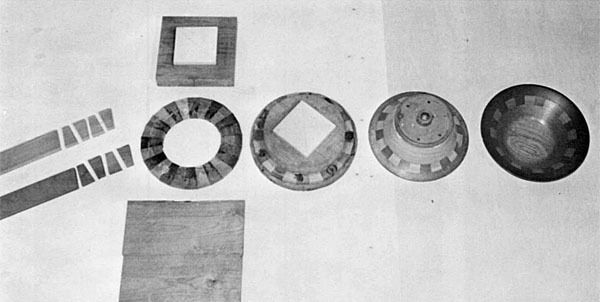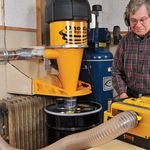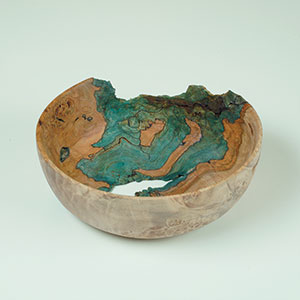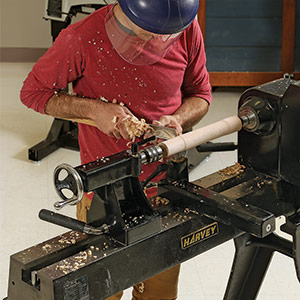Checkered Bowls
Reinterpreting in wood the designs of the American Indian
Synopsis: Irving Fischman wrote this article while he was immersed in the pottery and basketry of the Indians of the Americas. They used simple shapes to counterpoint intricate painted or woven patterns, which he reinterprets in wood. Here he explains how to make a bowl with a simple bell or trumpet shape and a checkered pattern of teak and black walnut. Familiarity with lathe work and a supply of clamps, both band and deep throated, are essential for this project. Multiple photos illustrate the detailed steps he describes in the article.
After turning bowls for several years, I have recently begun to explore the classic designs used since antiquity in pottery and basket making. I am now particularly interested in the pottery and basketry of the Indians of the Americas. Simple shapes—such as truncated cones or bells—are used to counterpoint intricate painted or woven patterns. I have tried to reinterpret this design approach into a different medium, wood.
One bowl in particular has a simple bell or trumpet shape and a checkered pattern of teak and black walnut, woods that are richly contrasting. To make this bowl, familiarity with lathe work and a supply of clamps, both band and deep throated, are essential.
Basically, the bowl is made of three layers of wood. A 15 or 16-inch square of one-inch walnut forms the top layer of the bowl and an 11-inch square of two-inch teak forms the bottom. In between is a checkered ring of teak and walnut one inch thick. Both the top and bottom pieces should be planed or sanded flat and cut into a disk shape.
To provide a means of attaching the faceplate, I glue a piece of 3/4-inch Baltic birch plywood directly to the bottom of the teak. No sheet of paper is used between them because the mass is so large that the paper might fail during turning. I use birch plywood because it is far stronger than either fir plywood or solid wood.
The checkered ring in the center of the bowl is not an inlay as first observation of the completed bowl might suggest. It is a separate layer composed of solid truncated-wedge-shaped pieces glued together to form a ring. This technique is much easier than inlaying on the curved surface of a turned bowl and the pattern can be seen on both sides of the bowl—in the manner of Indian baskets.
The ring has twenty-four pieces, the smallest number that I felt would have a pleasing visual effect. Larger numbers of pieces are possible, but the accuracy of the angles of the pieces becomes correspondingly more critical.
From Fine Woodworking #1
For the full article, download the PDF below:
Fine Woodworking Recommended Products


Stanley Powerlock 16-ft. tape measure

Starrett 12-in. combination square





















Log in or create an account to post a comment.
Sign up Log in